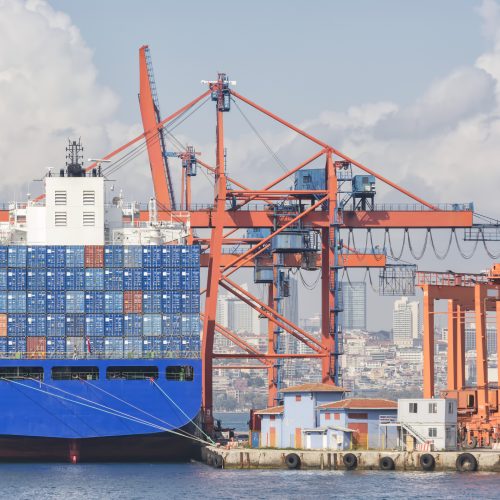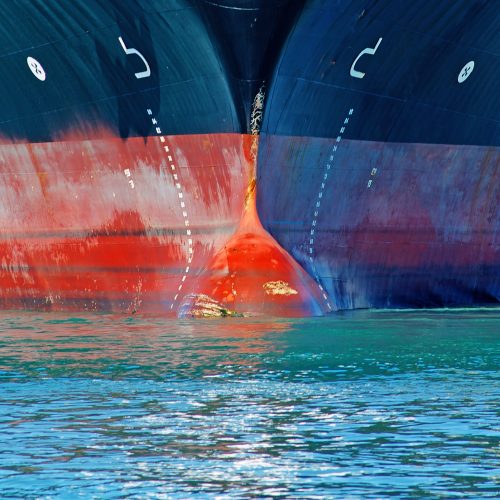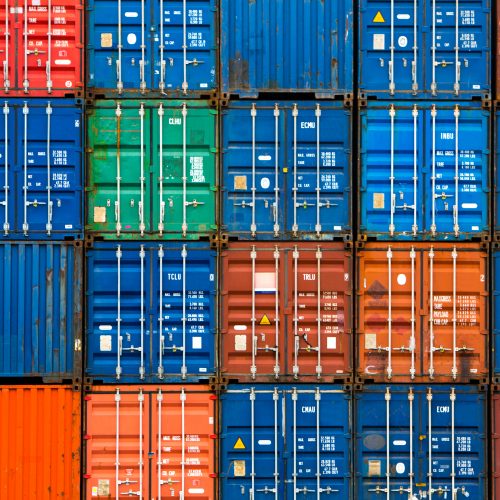Mark Grundy
Managing Director of Global Marketing & Communications

Canadian ports first to offer financial incentives using A to G ratings
“These Canadian Ports are the very first ports in the world to work with us on this, and it’s just great. We can now use this as an example and roll it out around the rest of the world. Delighted that Canada is leading the way.”—Sir Richard Branson, Founder of Carbon War Room
Ship Owners Benefit from Reduced Harbor Dues
Canada’s two largest west coast ports are now offering financial incentives to ship owners based on the ‘A to G’ Greenhouse Gas Emissions (GHG) rating, which benchmarks the energy efficiency of the international shipping fleet.
Port Metro Vancouver’s ‘Eco-Action’ Program and Prince Rupert Port Authority (PRPA)’s ‘Green Wave’ Program will reward the most efficient vessels that enter the ports.
PRPA’s Green Wave Program has already received 19 vessel entries during its first two weeks, with 11 of these vessels using the A to G rating scheme. At both ports, vessels meeting specific GHG emission levels will receive a discount on port dues, rewarding vessel owners that invest in fleet efficiency improvements. The rating system, established by maritime risk experts RightShip and the Carbon War Room, will be used alongside the established Environmental Ship Index, which evaluates Sulphur Oxide and Nitrogen Oxide emissions.
Port Metro Vancouver’s program has included the A to G rating system for just over a year, while PRPA’s expanded program came into effect on January 1st, 2014. Both ports hope to encourage collaboration from other global port authorities to endorse the scheme further.
Currently 16 charterers—representing 21% of the non-container charter market, 1.6 billion tons of commodities transported annually, and 20,000 vessel movements per year—use the A to G rating as part of their vessel selection process.
Duncan Wilson, VP of CSR at Port Metro Vancouver, says his organization’s “EcoAction” initaitive, which takes cleaner fuels, improved engine technology and other factors into account, offered discounts amounting to $1.1-million last year, representing roughly 10 percent of revenue from deep-sea harvor dues.
“As more members of the worldwide port community launch similar initiatives, common systems of measurement and reward are vital to wide adoption and success,” says Don Krusel, President and CEO, Prince Rupert Port Authority.
The A to G rating contains information on over 70,000 existing vessels and provides a simple and easy-to-use tool for ports to provide incentives without additional paperwork. For ports interested in adopting the A to G rating, RightShip can provide a retrospective analysis of a port’s distribution of A- to G-rated vessels, as well as the cost implications of shifting to the rating scheme, using historical arrivals data.
RightShip Chief Executive, Warwick Norman, says, “It’s survival of the greenest and owners that invest in the technology to reduce emissions are being rewarded by charterers using their vessels and ports providing discounted harbor dues. If this leads to a two-tier market then less efficient vessels will be driven out of the market.”
Both Port Metro Vancouver and Prince Rupert Port Authority are members of Green Marine, a North American industry initiative that encourages companies to achieve environmental performance that exceeds regulatory compliance. Offering incentive schemes to cleaner vessels is one way a port can achieve a higher sustainability rating within Green Marine’s certification process.
Green Marine executive, David Bolduc, says, “It is great to see Port Metro Vancouver and Prince Rupert Port leading the field in raising the bar to advance environmental protection at seaports in the Americas.”

RightShip
RightShip provides the world's most comprehensive online marine and environmental risk management system, enabling customers to identify in advance the 20 per cent of substandard operators who account for the majority of total casualties. RightShip supports more than 2500 users in over 215 organizations worldwide.Its offices are in London, Houston and Melbourne.

About Prince Rupert Port Authority
With five terminals, including the fastest-growing container terminal in North America, and industrial land primed for development at the terminus of CN Rail's Northern Mainline, the Port of Prince Rupert is growing Canada's trade with Asia's growing economies safely, responsibly, and sustainably.

Port Metro Vancouver
On January 1, 2008, after nearly one hundred and fifty years of existing separately, the Fraser River Port Authority, North Fraser Port Authority and Vancouver Port Authority combined to become the Vancouver Fraser Port Authority (VFPA), now known as Port Metro Vancouver. As the fourth largest tonnage port in North America, PMV offers 28 major marine cargo terminals and three Class 1 railroads, providing a full range of facilities and services to the international shipping community.

